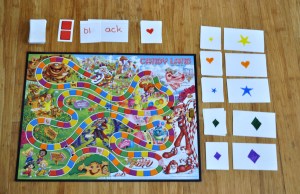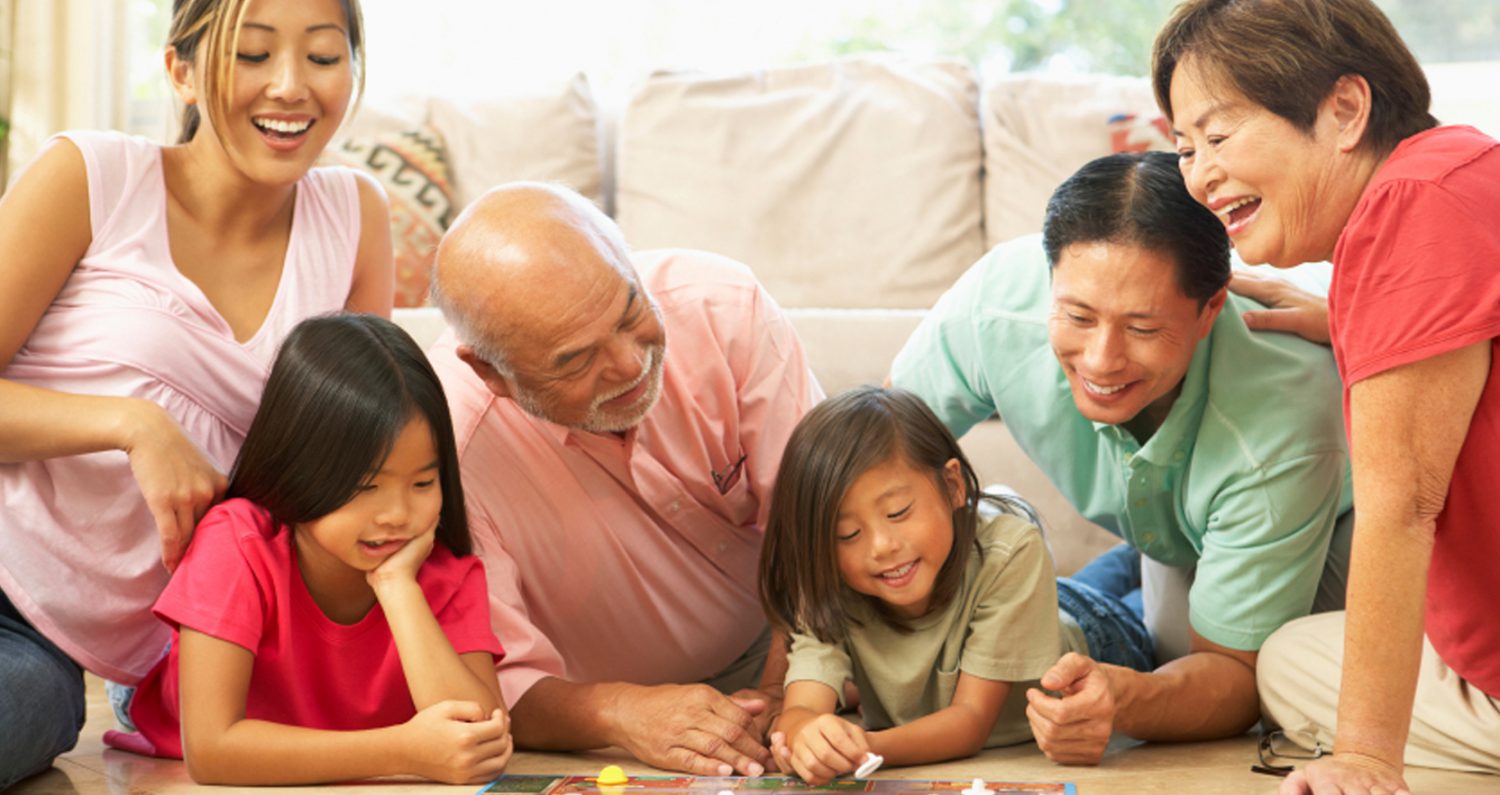 In our house, we’re working with my 1st grader on quickly reading letter blends instead of sounding them out. (E.g. ing, ack, ou, tion, kn, etc.) But, flashcards are boring–not just for HER but for ME.
In our house, we’re working with my 1st grader on quickly reading letter blends instead of sounding them out. (E.g. ing, ack, ou, tion, kn, etc.) But, flashcards are boring–not just for HER but for ME.
Being that I am all about making learning FUN for kids as inexpensively as possible, I re-purposed an old board game that she’d recently become bored with–Candy Land–and made it into a reading “trick” game.
The result? My “people smart” daughter who has less of an interest in the reading-to-herself realm asked to play four times in 36 hours. It was a real treat for me to see her have so much fun learning…and to see it translate into much more fluid bedtime reading last night.
This game can easily be aged up based on your child’s grade/skill level. Try it with Latin roots to expand vocabulary or help with spelling… Try it with math skills based on their level… Or even with language verb conjugation, historical events or the periodic table.
(Want to just mix in questions with the traditional deck? Try our Candy Land printable template to insert the questions in an easy-to-use form, then print them on Avery Clean Edge business cards.)
Here’s how to do it:
1) make a BIG index card for each color with the key skill being practiced (we used the letter blend). Cut index cards in half for 6 examples of use. In the picture, we were practicing the ACK blend, so I made small index cards that used the letters BL, SN, SH, CR, R, P.
2) Use a matching symbol on the opposite side of the card so you know which little cards go with which big cards. We used hearts, diamonds and stars of each color, which gave us 18 blends to start.
3) Have your child pick one symbol “set” of each color.
4) Play Candy Land as you would normally with the CL deck, but…
(a) when you pick a SINGLE color, you have to get the right answer to make the move.
In our case, my daughter had to make the correct sound. If using it with a Latin root, the child would have to know that “rupt” means “break”; if using it as a Chemistry game, they would have to know that H=hydrogren; if using for Spanish practice, the child would have to know that “jugar” means “to play”.
(b) If you get a DOUBLE color, you have to get the blend correct to move forward.
In our case, my daughter had to know that “TH” and “ING” together made the word “THING”. Using the same examples as above – if the child got a double color, the question might be what does “INTER” “RUPT” mean? If using with Chemistry, what’s something that H and O make together? If using for Spanish practice, how would you conjugate “jugar” for “we”?
5) As with traditional Candy Land, whoever gets to the end first wins.
ALTERNATE VERSION: If you’ve got several kids and want to make it a learning game for the whole family, assign each child a different symbol with different skills they’re working to learn. If your 1st grader selects a red, the question will be different than your 6th grader.

